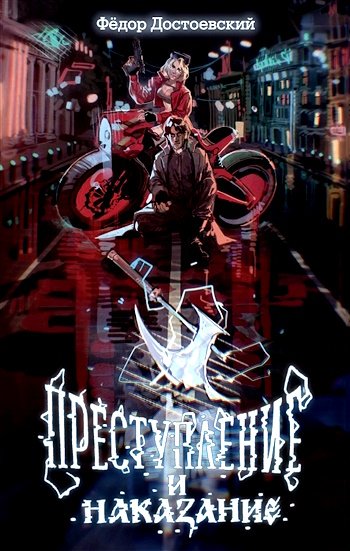7. Erhard Schütz, “Das ‘Dritte Reich’ als Mediendiktatur. Medienpolitik und Modernisierung in Deutschland 1933 bis 1945,” Monatshefte 87, no. 2
(summer 1995): 129 –150; and Erhard Schütz, “Zur Modernität des ‘Dritten Reiches,’” Internationales Archiv für Sozialgeschichte der Literatur 20, no. 1
(1995): 116 –136.
8. Silent cinema, of course, had never been entirely silent either. On the uses of music and sound techniques in German theaters prior to the breakthrough of synchronized sound see the contributions by Richard Traubner, Horst Claus, and Michael Wedel to MusikSpektakelFilm: Musiktheater und Tanzkultur im deutschen Film, 1922 –1937, ed. Hans-Michael Bock, Wolfgang Jacobsen, and Jörg Schöning (Munich: Edition Text und Kritik, 1998). See also Herbert Birett, Stummfilm-Musik. Materialiensammlung (Berlin: Deutsche Kinemathek, 1970); Walther Seidler, ed., Stummfilmmusik gestern und heute (Berlin: Spiess, 1979); and Hansjörg Pauli, Filmmusik: Stummfilm (Stuttgart: Klett-Cotta, 1981).
9. The Singing Fool was actually shown using the Vitaphone process, a sound-on-disk system already outmoded by 1929.
10. Tom Gunning, “An Aesthetic of Astonishment: Early Film and the (In)Credulous Spectator,” in Viewing Positions: Ways of Seeing Film, ed. Linda Williams (New Brunswick, N.J.: Rutgers University Press, 1995), 114 –133.
11. Fred Hildenbrandt, “Der Singende Narr,” June 4, 1929, Archive of Stiftung Deutsche Kinemathek, Berlin. The Singing Fool premiered with two short sound films on the supporting bill. The choice was programmatic. The first short presented the performance of an American jazz band; the second showed tenor Benjamino Gigli intoning arias from Italian opera. “It is only a matter of time,” rejoiced one reviewer, “and La Scala will play for only one Deutschmark in small provincial towns” (R. K. [author’s initials], “Filmbesprechung: Der singende Narr,” Licht-Bild-Bühne, June 4, 1929). According to this and other commentators, talking films redefined the role of the movie theater as a cultural institution. It promised a vernacular joining high art and popular culture, a synthesis that would appeal to audiences across the boundaries of class, status, and aesthetic preference.
12. See, e.g., Hans Wollenberg, “Filmbesprechung: ‘Melodie des Herzens,’”
Licht-Bild-Bühne, December 17, 1929.
10-C2205-END 8/17/02 3:39 PM Page 277
Notes to Pages 28 –34
/
277
13. Ernst Jäger, review of Melodie des Herzens, Film-Kurier, December 17, 1929.
14. For more on the market struggles between Hollywood and Weimar cinema see Thomas J. Saunders, Hollywood in Berlin: American Cinema and Weimar Germany (Berkeley: University of California Press, 1994).
15. Victoria de Grazia, “Mass Culture and Sovereignty: The American Challenge to European Cinemas, 1920 –1960,” Journal of Modern History 61
(March 1989): 68.
16. See, e.g., the speech delivered by Dr. James Birnholz, director of AEG, to industry representatives in December 1929, in Film-Kurier, December 16, 1929.
17. Guido Bagier, Das tönende Licht (Berlin: Gross, 1943), 398 –399.
18. Anton Kaes, “Film in der Weimarer Republik: Motor der Moderne,” in Geschichte des deutschen Films, ed. Wolfgang Jacobsen, Anton Kaes, and Hans Helmut Prinzler (Stuttgart: Metzler, 1993), 86.
19. Alan Williams, “Historical and Theoretical Issues in the Coming of Recorded Sound to the Cinema,” in Sound Theory, Sound Practice, ed. Rick Altman (New York: Routledge, 1992), 128.
20. Miriam Hansen, Babel and Babylon: Spectatorship in American Silent Film (Cambridge, Mass.: Harvard University Press, 1991), 94.
21. Herbert Ihering, “Der akustische Film,” Berliner Börsen-Courier, September 19, 1922.
22. Noël Carroll, “Lang, Pabst, and Sound,” Ciné-Tracts 2, no. 1 (fall 1978): 15–23; Rick Altman, “Introduction,” Yale French Studies 60 (1980): 3 –15.
23. Emil Jannings, “Deutschland und der internationale Tonfilm,” Der Film, June 3, 1929.
24. Qtd. in Gerd Rühle, Das Dritte Reich: Dokumentarische Darstellung des Aufbaus der Nation. Das erste Jahr: 1933 (Berlin: Hummel, 1934), 82; also qtd. and trans. in Eric Rentschler, The Ministry of Illusion: Nazi Cinema and Its Afterlife (Cambridge, Mass.: Harvard University Press, 1996) , 20.
25. Theodor W. Adorno, “On Popular Music,” in On Record: Rock, Pop, and the Written Word, ed. Simon Frith and Andrew Goodwin (London: Routledge, 1990), 308.
26. Mary Ann Doane, “The Voice and the Cinema: The Articulation of Body and Space,” in Film Sound: Theory and Practice, ed. Elisabeth Weis and John Belton (New York: Columbia University Press, 1985), 162.
27. Alan Williams, “Is Sound Recording Like a Language?” Yale French Studies 60 (1980): 51– 66.
28. On Menzel’s “star” status see Hans-Christoph Blumenberg, Das Leben geht weiter: Der letzte Film des Dritten Reichs (Berlin: Rowohlt, 1993), 68 –71.
29. K. Zierold, “Bedeutung und Grenzen des Films als Erziehungsmittel,”
Film und Bild, April 10, 1935.
30. Gerd Eckert, “Filmtendenz und Tendenzfilm,” Wille und Macht. Führer-organ der nationalsozialistischen Jugend 6, no. 4 (1938): 22.
31. Joseph Goebbels, “Rede anläßlich der Kriegstagung der Reichsfilm-
10-C2205-END 8/17/02 3:39 PM Page 278
278
/
Notes to Pages 34 –37
kammer am 15.2.1941 in Berlin,” reprinted in Gerd Albrecht, Nationalsozialistische Filmpolitik (Stuttgart: Enke, 1969), 469.
32. Karsten Witte, “Visual Pleasure Inhibited: Aspects of the German Revue Film,” New German Critique 24/25 (fall/winter 1981/82): 238 –263.

























